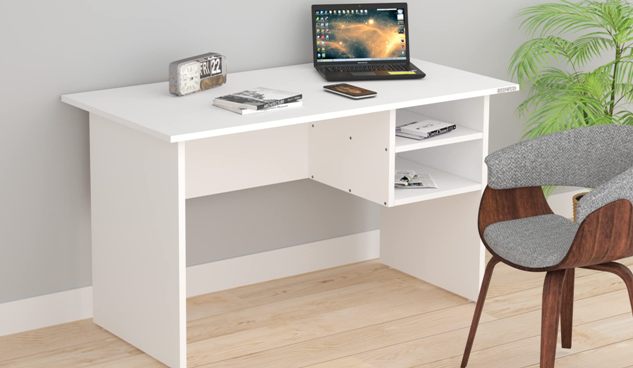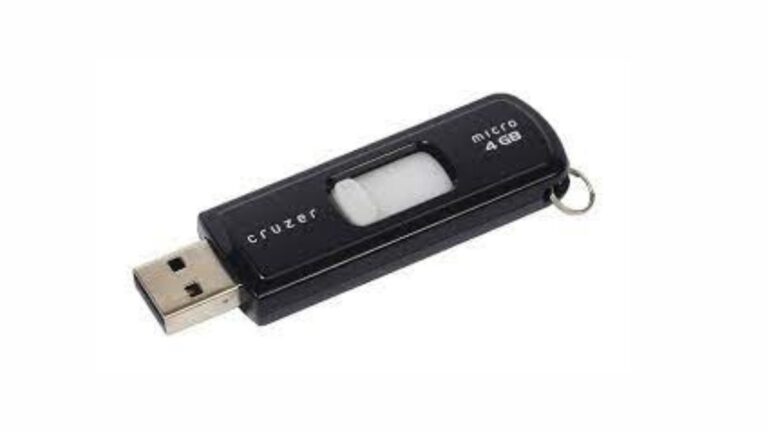Perfect Computer Desk,Mattres,size,material
In the world of modern technology, having a functional and ergonomic computer desk is crucial for productivity and comfort. Whether you’re a professional who spends long hours in front of a computer or a student tackling assignments, the right computer desk can make a world of difference. We understand your need for a comprehensive guide to choosing the perfect computer desk that not only meets your requirements but also helps you work efficiently.

Why Your Choice of a Computer Desk Matters
Before we delve into the intricacies of selecting the ideal computer desk, it’s important to understand why this choice matters. Your computer desk is not just a piece of furniture; it’s your workstation, your creative space, and the foundation of your productivity. Here’s why it matters:
1. Ergonomics for Health and Comfort
An ergonomic computer desk can significantly impact your health and comfort. It promotes a healthy posture, reducing the risk of back and neck strain, and provides comfort during long working hours.
2. Organized Work Environment
An organized workspace contributes to a clutter-free mind. The right computer desk should offer ample storage options, cable management solutions, and a clean layout to enhance your productivity.
3. Style and Aesthetics
Your computer desk should align with your personal style and the aesthetics of your workspace. It should inspire you and make you feel at home in your office.
Key Factors to Consider When Choosing a Computer Desk
Now that we’ve established the importance of choosing the right computer desk let’s explore the key factors you should consider:
1. Size and Space
The first step in choosing a computer desk is to assess the available space in your office or room. Measure the area where you intend to place the desk, taking into account the dimensions of the desk itself. Ensure there’s enough room for movement and other essential furniture.
2. Desk Type
There are various types of computer desks available, each catering to different needs:
- Standard Desks: These are versatile and suitable for most users. They offer a flat surface for your computer and additional accessories.
- Corner Desks: Ideal for optimizing space, corner desks fit snugly into corners, making efficient use of room space.
- Standing Desks: For those who prefer a more dynamic workspace, standing desks allow you to switch between sitting and standing positions, promoting better posture.
- L-Shaped Desks: These provide ample workspace and are excellent for multitasking or setting up multiple monitors.
3. Material and Durability
Consider the material of the desk. Common options include:
- Wood: Classic and sturdy, wooden desks offer durability and a timeless look.
- Metal: Metal desks are sleek and modern, often featuring glass tops for a contemporary aesthetic.
- Particleboard: More budget-friendly, particleboard desks are lightweight but may not be as durable as solid wood or metal.
4. Storage and Organization
Evaluate your storage needs. Look for desks with drawers, shelves, or cabinets if you need to keep paperwork, stationery, or other items organized. Built-in cable management is also essential to keep your workspace tidy.
5. Style and Design
Choose a desk that complements your room’s style. Whether you prefer a minimalist, industrial, or traditional look, there’s a computer desk design to match your taste.
6. Budget
Set a budget for your computer desk. While it’s tempting to splurge on the fanciest option, there are excellent desks available at various price points. Consider quality, features, and longevity when making your decision.
Additional Tips for an Optimal Computer Desk Setup
To further enhance your computer desk setup, here are some additional tips:
1. Invest in an Ergonomic Chair
Pair your computer desk with an ergonomic chair that supports your spine and promotes good posture.
2. Proper Lighting
Ensure your workspace has adequate lighting to reduce eye strain. Consider a desk lamp with adjustable brightness.
3. Cable Management
Keep cables organized with cable clips or a cable management tray to prevent tangling and clutter.
4. Personalization
Add personal touches to your desk with plants, artwork, or items that motivate and inspire you.
5. Regular Maintenance
Maintain your computer desk and clean it regularly to ensure it remains in top condition.
In conclusion, choosing the perfect computer desk is a significant decision that can greatly impact your comfort and productivity. By considering factors such as size, type, material, storage, style, and budget, you can make an informed choice that caters to your specific needs. Remember that your computer desk is not just a piece of furniture; it’s your workspace, and investing in the right one is an investment in your productivity and well-being.
Matching Your Desk to Your Work
1. Work Type
Consider the nature of your work when choosing a computer desk. Are you primarily working on a desktop computer, a laptop, or a combination of both? This will influence the size and features you need. For example, if you use dual monitors, you’ll need a desk with a wider surface area.
2. Gaming Desks
For avid gamers, there are specialized gaming desks designed to accommodate gaming setups. These desks often come with features like built-in cable management, headphone hooks, and even RGB lighting to create an immersive gaming experience.
3. Home Office vs. Corporate Office
Your choice of computer desk may also depend on whether you’re setting up a home office or a corporate office. In a corporate setting, you might opt for more traditional and professional-looking desks, while at home, you have the freedom to choose a desk that reflects your personal style.
Assessing Desk Height and Ergonomics
1. Adjustable Height Desks
For ultimate comfort, consider an adjustable height desk. This allows you to switch between sitting and standing positions throughout the day, reducing the strain on your back and neck. Some even come with memory presets, so you can easily switch between your preferred sitting and standing heights.
2. Monitor Placement
Ensure that your computer monitor is at eye level to prevent neck strain. If your desk lacks a monitor stand, you can invest in one separately or choose a desk with an adjustable monitor shelf.
3. Keyboard and Mouse Placement
Your desk should also accommodate a comfortable keyboard and mouse placement. An ergonomic keyboard tray can be a valuable addition to your workspace.
Special Features for Enhanced Productivity
1. Cable Management
We mentioned cable management briefly, but it’s worth emphasizing. A cluttered desk not only looks messy but can also be distracting. Look for desks with built-in cable routing options or use cable sleeves to keep wires neatly organized.
2. Built-in Power Outlets and USB Ports
Some modern desks come equipped with power outlets and USB ports, making it convenient to charge your devices without having to reach for distant sockets.
3. Storage Options
Consider the items you need to store within arm’s reach. Pens, notebooks, or office supplies should have dedicated storage space to keep your desk uncluttered.
4. Privacy Panels
If you value privacy or want to reduce distractions, consider desks with privacy panels or screens. These can also help define your workspace in an open office environment.
Testing Before Purchasing
Lastly, if possible, test the desk before making a purchase. Sit at it, move around, and envision your daily work routine. This hands-on experience can provide valuable insights into whether the desk truly meets your needs and is comfortable to work at.
In conclusion, choosing the perfect computer desk is a thoughtful process that goes beyond aesthetics. By considering your work type, assessing ergonomics, and exploring special features, you can find the desk that suits your specific needs and enhances your overall workspace. Remember, the right desk can be the key to unlocking your full productivity potential.
1. Color and Finish
Consider the color and finish of the desk. It should complement the overall color scheme of your workspace. Light-colored desks can make a small room feel more open, while dark-colored desks can add a
Certainly, let’s continue with more insights on making the right aesthetic choice when selecting a computer desk.
Making the Right Aesthetic Choice (Continued)
2. Minimalist or Ornate
Think about your personal style and the ambiance you want to create. Are you drawn to a minimalist and clean look, or do you prefer a more ornate and decorative desk? Your desk choice can set the tone for your workspace.
3. Material Texture
Consider the texture of the desk’s material. Wood desks often have a warm and inviting texture, while glass and metal surfaces tend to have a sleek and modern feel. Choose a texture that resonates with your preferences and the atmosphere you want to cultivate in your workspace.
Assembly and Maintenance
1. Assembly Complexity
Before purchasing, check whether the desk requires assembly. Some desks come flat-packed and need to be assembled at home. If you’re not comfortable with DIY assembly, consider desks that come pre-assembled or with professional assembly options.
2. Cleaning and Maintenance
Different desk materials require varying levels of maintenance. Wooden desks may need periodic polishing, while glass desks may need frequent cleaning to maintain their transparency. Consider how much time and effort you’re willing to invest in desk maintenance.
Warranty and Customer Support
1. Warranty Coverage
Review the warranty offered by the manufacturer. A longer warranty period can provide peace of mind regarding the desk’s durability. Ensure that the warranty covers potential issues like manufacturing defects.
2. Customer Reviews
Before making a final decision, read customer reviews and testimonials about the desk you’re considering. Real-world experiences from other buyers can offer valuable insights into the desk’s quality and durability.
Sustainability and Environmental Impact
If you’re environmentally conscious, you may want to choose a desk that aligns with your values. Look for desks made from sustainable materials, such as FSC-certified wood or recycled materials. Sustainable choices not only benefit the planet but also contribute to a healthier workspace.
Conclusion
Selecting the perfect computer desk is a multifaceted decision that involves considerations beyond just functionality. Aesthetics, material choices, assembly requirements, maintenance, warranty, and sustainability all play a role in finding the ideal desk for your needs.
Remember that your computer desk is an investment in your well-being and productivity. By carefully assessing these factors and aligning them with your personal preferences, you can confidently choose a desk that enhances your workspace and contributes to your overall comfort and productivity.
Frequently Asked Questions (FAQs) About Computer Desks
Q1. What size computer desk do I need?
Ans.The size of your computer desk depends on available space and your specific needs. Measure your workspace to determine the dimensions that will fit comfortably. Consider your work setup; if you have multiple monitors or require extra workspace for tasks, opt for a larger desk.
Q2. What is the best material for a computer desk?
Ans.The best material depends on your preferences and budget. Common materials include wood, metal, and glass. Wood offers durability and a classic look, metal provides a modern aesthetic, and glass adds a sleek touch. Choose the one that aligns with your style and functional requirements.
Q3. What type of desk is best for gaming?
Ans.Gaming desks come in various styles, but the key is functionality. Look for desks with cable management, ample space for multiple monitors, and gaming-specific features like headphone hooks or built-in RGB lighting. Consider ergonomics to ensure long gaming sessions are comfortable.
Q4. How can I maintain and clean my computer desk?
Ans.Maintenance depends on the desk material. For wooden desks, use furniture polish or a damp cloth for cleaning. Glass desks can be cleaned with glass cleaner, and metal desks usually require a damp cloth. Regular dusting and wiping down surfaces will help keep your desk looking its best.
Q5. Are standing desks better than sitting desks?
Ans.Standing desks offer the advantage of allowing you to alternate between sitting and standing, which can promote better posture and reduce the risk of health issues associated with prolonged sitting. However, the choice between sitting and standing desks depends on your comfort and work habits.
Q6. Do I need a keyboard tray with my computer desk?
Ans.A keyboard tray is beneficial for ergonomics. It allows you to position your keyboard and mouse at the right height, reducing strain on your wrists and shoulders. If your desk doesn’t have a built-in tray, consider purchasing an ergonomic keyboard tray separately.
Q7. Can I assemble the desk myself, or should I get professional assembly?
Ans.The complexity of assembly varies by desk. Some desks come pre-assembled, while others require DIY assembly. If you’re not confident in your assembly skills, consider desks that offer professional assembly services. It’s essential to ensure the desk is assembled correctly to avoid stability issues.
Q8. What should I look for in a warranty for my computer desk?
Ans.Warranty terms can vary widely. Look for a warranty that covers manufacturing defects and provides reasonable coverage duration. A longer warranty period can offer added peace of mind, especially for more expensive desks.
Q9. Are there environmentally friendly computer desk options?
Ans.Yes, there are eco-friendly options. Look for desks made from sustainable materials, such as reclaimed wood or FSC-certified wood. These choices reduce environmental impact and promote sustainability.






